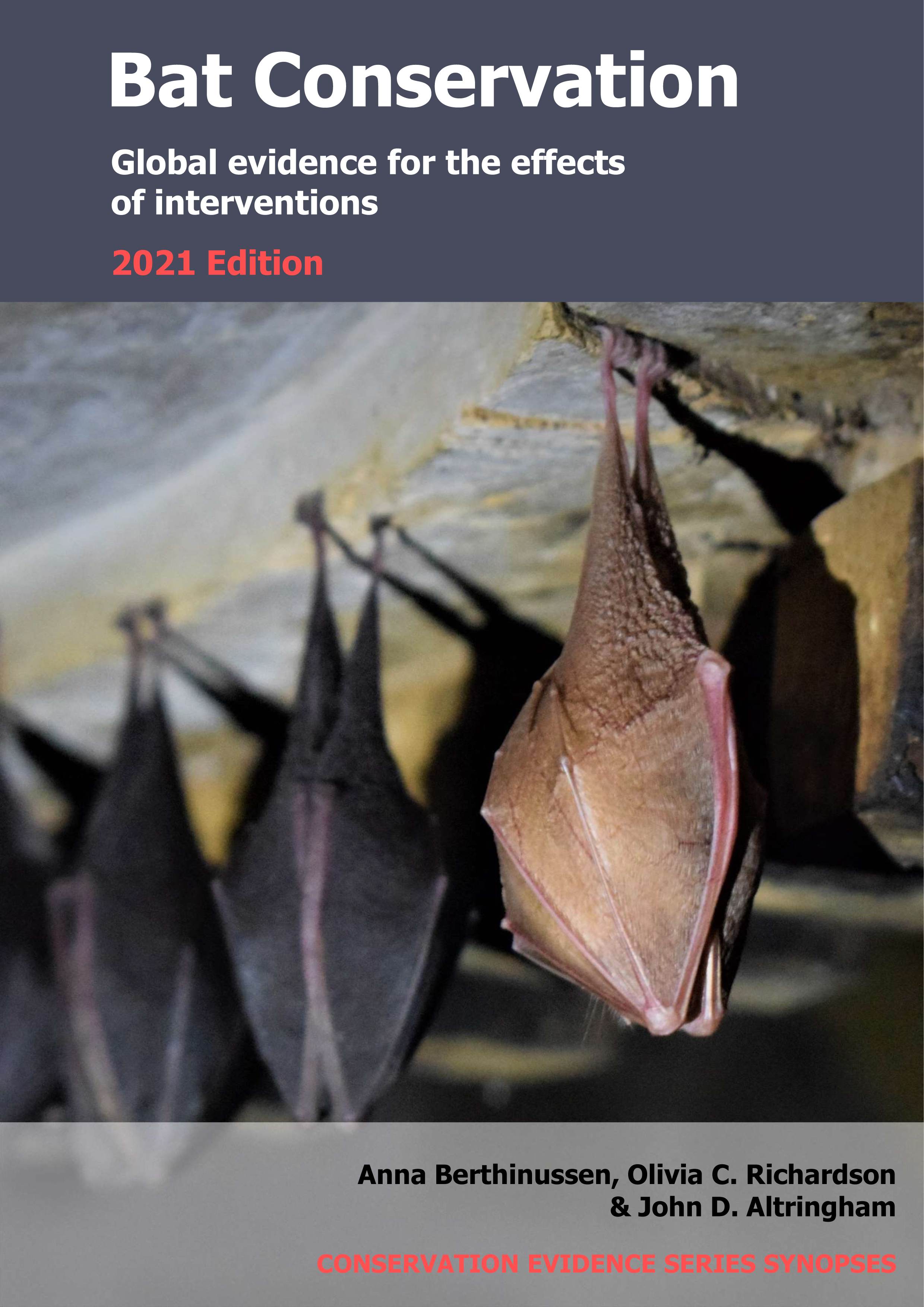Relocate bat colonies roosting inside dams
-
Overall effectiveness category Unknown effectiveness (limited evidence)
-
Number of studies: 1
View assessment score
Hide assessment score
How is the evidence assessed?
-
Effectiveness
5% -
Certainty
5% -
Harms
5%
Study locations
Supporting evidence from individual studies
A study in 2002–2003 at one dam reservoir in Tucumán Province, Argentina (Regidor et al 2003) found that almost two-thirds of a large colony of Brazilian free-tailed bats Tadarida brasiliensis relocated to a different internal dam compartment after being displaced from the six compartments where the colony originally roosted. Approximately 1,400,000 Brazilian free-tailed bats were estimated to be roosting in one dam compartment five months after the displacement of a colony of approximately 2,000,000 bats from six of the seven dam compartments where it previously roosted. The study was conducted inside a dam wall (100 m long, 90 m high). The wall housed seven compartments used by Brazilian free-tailed bats. In October 2012, bats were deterred from six of the seven compartments using high intensity lights and naphthalene vapour. Once empty of bats, the dam compartments were sealed with metal doors. Bat numbers were estimated by three observers based on the area occupied by each single bat. Bats were counted three times between October 2002 and March 2003.
Study and other actions tested
Where has this evidence come from?
List of journals searched by synopsis
All the journals searched for all synopses
This Action forms part of the Action Synopsis:
Bat Conservation
Bat Conservation - Published 2021
Update 2020





)_2023.JPG)














